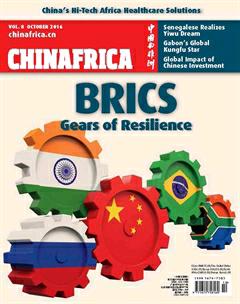Resolving Overcapacity
discussions surrounding overcapacity at the justconcluded G20 summit in hangzhou, east chinas Zhejiang Province, indicate that the problem has caught the attention of the worlds leading economies. ChinAfrica commentator Lan Xinzhen thinks that industrial overcapacity is a global issue that all countries should confront together.
THOUGH overcapacity was hotly discussed at G20 Summit, few concrete action plans to mitigate the impact of overcapacity on world economic growth were crafted. This demonstrates that the international community has yet to surmount a number of obstacles.
Overcapacity exists in a number of sectors, particularly in the oil, iron and steel, coal, cement and solar panel industries. However, few countries have taken actions to cut overcapacity for fear of affecting their economic growth for the worse. Despite that, during the B20 Summit, which gathered business leaders from around the world on September 3, President Xi Jinping reiterated Chinas goal to cut another 100 to 150 million tons of crude steel capacity in five years.
The problem is that economies often fail to recognize their own problems and instead lay blame on others.
As a matter of fact, industrial overcapacity is a global issue that all countries should confront together. Take the steel industry, for example. It relies on major iron ore producers such as Australia, Brazil and India as well as on primary steel producers like China, the EU, Japan, India, the United States and Russia. Asking just one of those countries to reduce its output wont solve the problem. The best solution would be for all countries to make concerted efforts toward addressing overcapacity.
Cutting an afflicted industrys overall production capacity is often regarded as the only way to address such problems. Contrary to this conventional wisdom, the most effective solution is derived from a combination of increasing the demand for the product while curbing output.
As the second largest economy in the world, China has overcapacity and high inventory issues, which have become a drag on the countrys growth. China therefore introduced its supply-side reform policy at the end of 2015 in a bid to mend the problem. China is the first among the major world economies to cut excess capacity, and on multiple occasions, the Chinese Government has called on the international community to address economic issues through collaboration.
On the one hand, negotiations can be carried out between various countries trade associations to cap the levels of steel production, imports and exports of those countries involved. It should be noted that international industrial capacity cooperation should be equal and mutually beneficial as well as take into consideration the relevant countriesdevelopment needs.
On the other hand, countries can work together to expand market demand. Many developing countries that would like to improve their peoples livelihoods have large market potential but no capital, large demand but no products. Therefore, countries burdened with overcapacity can make use of the markets in these areas. The Belt and Road Initiative launched by China provides great opportunities for cutting overcapacity. The initiative is not designed to transfer excess stock, but to increase demand and promote prosperity in countries involved.
Nevertheless, there are multiple problems surrounding international efforts to combat overcapacity, which cannot be resolved overnight. During the 18th China-EU Summit held in July in Beijing, China accepted the EUs proposal to form a working group to seek solutions to the problem. China will allow the EU to monitor and supervise Chinas steel prices, export volumes and the nations subsidies to steel plants in order to help them decide whether China has taken effective measures to address and reduce overcapacity. This showcases Chinas commitment to tackling the issue through international cooperation.
During the G20 Summit, world leaders agreed to establish a global forum on excess steel supplies. Its time for countries to discuss together strengthening overcapacity reduction and cooperation efforts.

